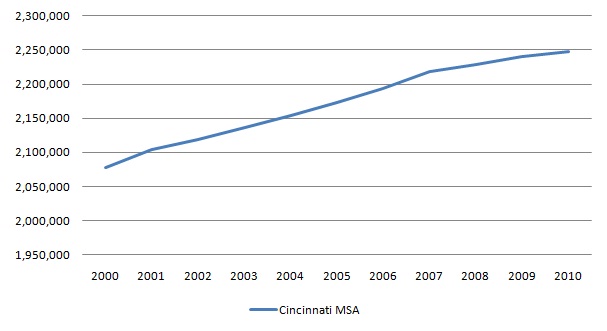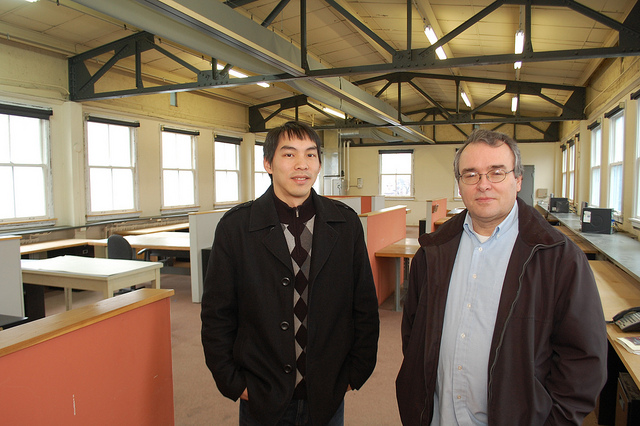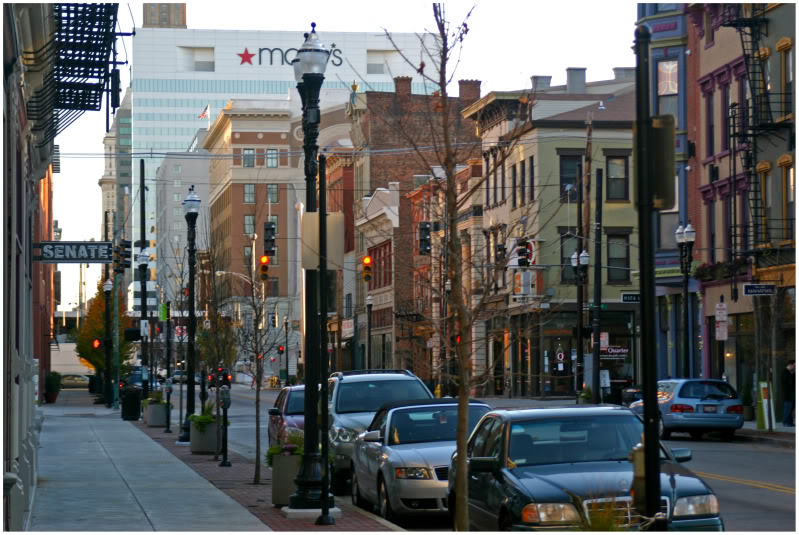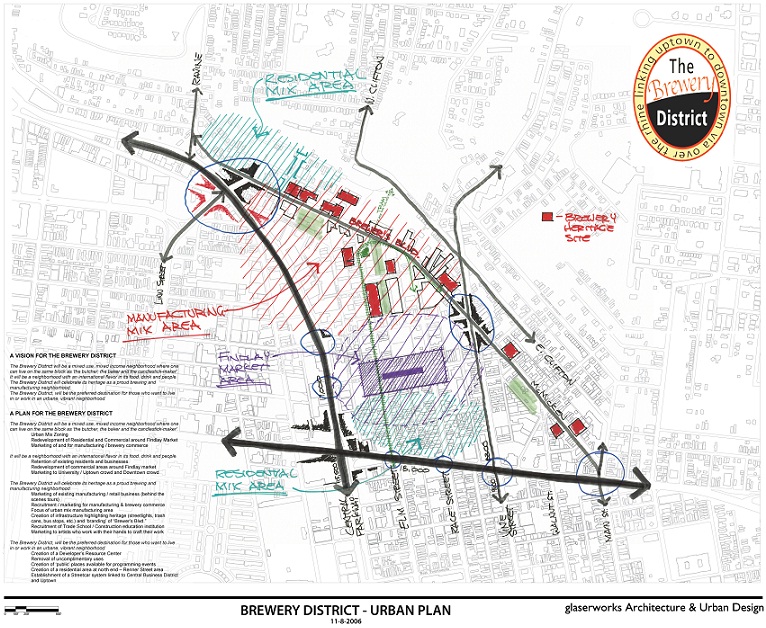Complete 2010 Census counts are to be released later this week for Ohio, but in advance of that new 2010 population estimates were released by the bureau yesterday. The county-level data for the Cincinnati metropolitan statistical area (MSA) shows anemic population growth for the now 2.2 million person region.
Of counties with more than 50,000 people, the fastest growers were Boone County, KY (40%), Warren County, OH (34.7%) and Clermont County, OH (10%). Over the last decade the region’s largest county saw its population increased by just more than 10,000 people giving Hamilton County, OH an estimated population of 855,340 in July 2010.
No county in the 17-county region studied experienced a population loss during the time frame, and over the ten-year period the region grew by an estimated 8.2 percent adding more than 170,000 people.
These estimates come out just days before Ohio’s full 2010 Census count is to be released. Other cities has felt sobering results from those hard counts that came in notably lower than the annual estimates the U.S. Census Bureau had been releasing.
Whether these estimates turn out to be accurate or not, a trend one can note is that the counties adding the most people are those close to the core of the region. While lower percentage increases exist in the region’s largest counties, they continue to add population to their base.
Leading up to the 2010 Census counts, Cincinnati Mayor Mark Mallory had been a prominent spokesperson for cities suggesting undercounts within inner cities and first-ring suburbs. Those efforts led to several population revisions for Cincinnati and area municipalities, but in a matter of days we will find out whether the mayor’s goal of counting 378,259 people in the City of Cincinnati will hold up or not.








